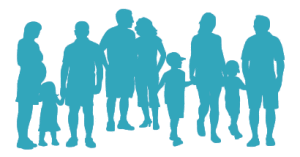I am returning from Atlanta where I spent 3 days and nights in a hotel with 60 families for the National Tay-Sachs and Allied Disease annual family conference. These families come in every shape and size but they share one common trait: they all know what it is like to care for a child that is going to die.
About half of the families present were currently caring for their sick children who were at various stages in the disease progression. Some of the children had only recently been diagnosed and were still free of the special stroller, the suction machine, the vacant gaze. Others were pretty far along, laid out in their mac-daddy stroller, equipment in tow. And the other half were families whose children had died as recently as 3 months ago and as long as 15 years ago.
This latter group — the long bereaved — baffled the ‘new’ parents, who were themselves looking fairly terrified. ‘Why do these older parents still come after all these years?’ one mother asked me. ‘Because,’ I told her, being a veteran myself, ‘they come to help the new families by serving as examples that parents can and will survive, by answering all the scary questions about ‘the end,’ and by showing that the children go on in their parents even after the children’s death.’
These bereaved veteran parents also come to hold the children who are currently sick, because in the holding they feel they are connecting with their child who has died. This might sound creepy but it isn’t. It is beautiful. The parents of the living children start to get it, and loan their child out to the bereaved parents for 10 minute cuddles.
Here are some other beautiful things I observed:
- Parents sharing tips for feeding, bathing, arguing with the insurance company, raising funds for research.
- Parents educating parents about the healing value of alternative therapies like Reiki and acupuncture and massage.
- Bereaved parents answering non-bereaved parents’ questions about hospice, about palliative care, about home death vs hospital death.
- Bereaved parents sharing the different ways they and their spouse cope with their grief and trying to help newly bereaved parents navigate the first year.
- Bereaved parents comparing the ways they dismantled (or didn’t) their child’s bedroom after death. Shrine or No Shrine.
- Bereaved parents talking about Where they see their child: in a butterfly, in a dragonfly, in a red-tailed hawk, no where.
- Bereaved parents talking about whether they Do or Don’t visit their child’s gravesite (and if they do, whether they let their dog run around on the site).
Perhaps my favorite moment was when a recently bereaved mom excitedly told me that she had just identified the new family that she wanted to give her daughter’s equipment and clothing to. She was thrilled!
It goes around and around and around and around.
Parents helping other parents.
Love AND Grief are the great equalizers and parents are each other’s greatest allies.

